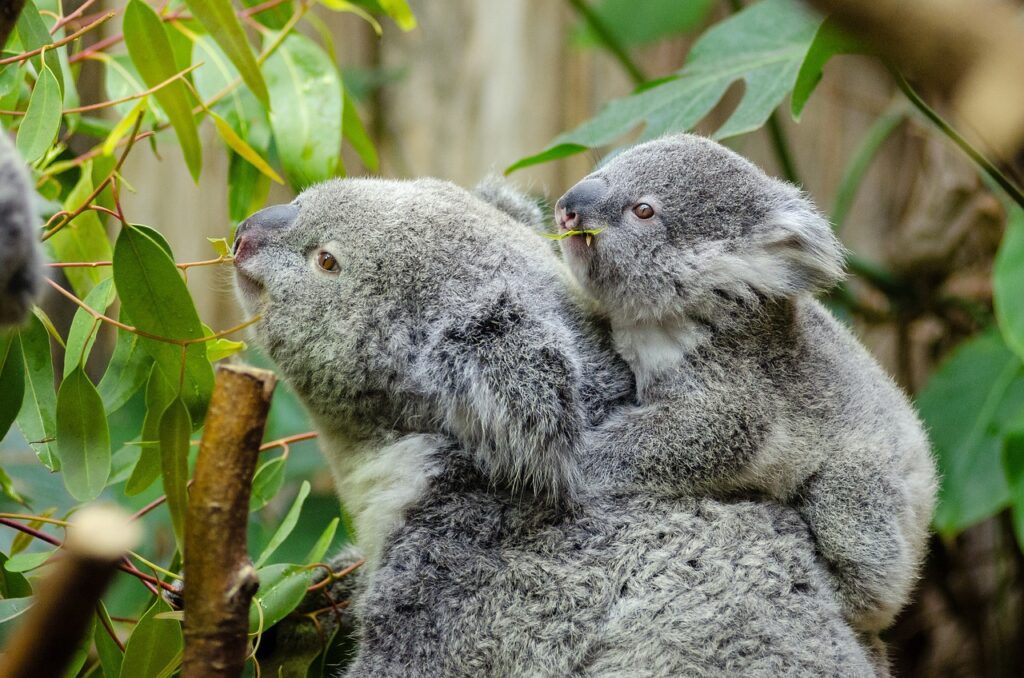Koalas, unique creatures only naturally found in Australia, were a part of my life for almost five years. It was a journey filled with passion and dedication, and I’m excited to share the first part of a five-part series on my time with them.
Hello again!
I wrote an article last month on my other blog (‘Ethics is not a dirty word’), drawing attention to the disaster that happened on Kangaroo Island, where koalas were negligently maimed and killed by poor logging practices. I won’t go into this, but if you are interested, you can read the article here.
This seemed like a great entrée to share my life and time with koalas over a four-year period when I was doing my postgraduate studies. This is the first of the installments.
The Invitation
When I finished my degree, I was lucky enough to be offered an Honours position in both Zoology and Microbiology. I was torn. I had always loved animals but was also intrigued by the microscopic world I had been introduced to in microbiology (not the fungi though, I wasn’t too keen on them). You can imagine my excitement when I was offered a project working on koalas, more specifically, how they survive on only Eucalyptus leaves. I took it with open arms, and off I went.
The first part of any postgraduate study is getting to know what you are up against. I hit the books and journals with enthusiasm. I knew a little bit about koalas, but what I discovered made them even more fascinating. Here is some of what I found out.
Strange but True
-
Most people think of koalas as short, dumpy animals covered in thick, woolly fur, with a prominent black snout and sleepy eyes that spend their entire lives stuck in a tree. (Not far from the truth).
-
The koala is, in fact, one of the most specialised arboreal leaf-eating animals in the world. So specialised it has become a slave to its self-imposed leaf diet, which consists of only a small number of Eucalyptus leaves.
-
If you have ever smelt Eucalyptus oil, can you imagine how unappetizing a mouthful of Eucalyptus leaves would be? In order to receive their quota of carbohydrates, fat, and protein, they have to consume 1-1.5 kgs (about 3.4 pounds) per day.
-
What is truly unique about the koala is its caecum, which can be up to 2 metres (6.5 feet) long (20% of its digestive tract). Other animals, such as rabbits, rats, and hamsters, have functional caecums, but the koala has the largest functional caecum of any animal. In humans, the caecum (our Appendix) is not functional.
-
Koalas have few natural enemies and can camouflage themselves very effectively in the bushy sections of trees. They usually lounge in the fork of two branches and, with their highly adapted claws, hang on and either eat, sleep, or sit and watch the world go by.
-
They have a very sedentary lifestyle (boring by all accounts!) and spend up to 20 hours /day sleeping. Some scientists hypothesized that this was due to the poor nutritional quality of their diet.
-
Koalas do not drink. In fact, the word ‘koalas’ is derived from the aboriginal language meaning ‘no drink or no water’. It was also hypothesized that they obtained all the moisture they needed from the eucalyptus leaves. Koalas will preferentially choose the youngest shoots and leaves that are higher in water content. They will drink water when they are sick or stressed and there have been some famous shots of koalas drinking water offered to them by firefighters during bushfires.
-
Their exceptionally big and sharp claws, make handling them a challenge. It can be done, by making sure that you have a well-padded jacket and supporting them from underneath. They have a large fat pad which is equivalent to our butt, that affords them some comfort for those long hours in the trees.
So What! – You Say
You are probably wondering where Microbiology came into all of this. Well, here we have a truly unique animal that feeds exclusively on Eucalyptus leaves that are toxic to most other animals and humans, the largest caecum of any living animal, (usually) never drinks and sits in a tree all day long.
Eucalyptus oil is antibacterial, so how do the microorganisms (bugs) that it needs to digest its food survive in its gut? Is the caecum just a large storage organ, or is it required to allow a prolonged fermentation to get the required nutrients?
When I started out all those years ago, not much was known about all of this. It was known that many sailors tried to take koalas back to their home countries by keeping them alive with biscuits soaked in Eucalyptus oil. The dependency on their habitat and lifestyle was so strong that needless to say, they all perished.
I was sold! I couldn’t wait to start, but how was I going to look at the microflora of a koala sitting ten metres up in a tree?
Well, that is for next time – Part II – Koala Poo!
You Can Help
I am writing this series in the hope of raising some money which I will contribute to the Australian Koala Foundation. If you want to make a donation, the best way is to make a donation on Ko-fi a donation is when you buy me a cup of coffee ($5 donation). I love coffee!!
Hope to see you back. Don’t miss out. Stay subscribed and add your thoughts or any comments you have (especially if you have something nice to say!) on the social media links (Linked In or Facebook).
Till next time,
Calvin
[Copyright The Compliance Concierge 2024]
Share this post: on Twitter on Facebook on Google+


